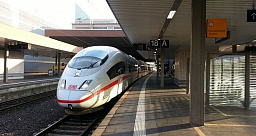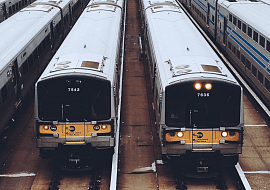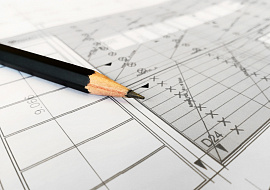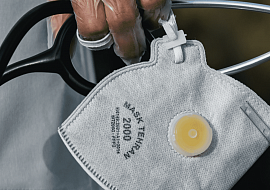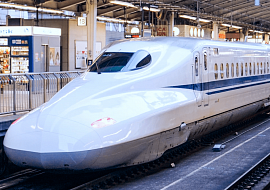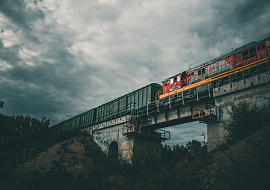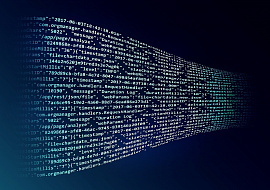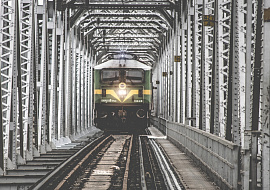A monitoring tool with multilevel becomes useful for all interested parties. It can be used by dispatchers to monitor the status of infrastructure objects and assign tasks to maintainers; railway maintenance staff can receive notifications via the tool; and the managing organization can use the tool to observe the whole situation within the infrastructure without interfering with it. Such a tool eliminates the need for additional communication between interested parties.
Real-Time Monitoring is Paving the Way to Advanced Railway Maintenance
Although considerable funds are poured into railway maintenance, both the managing companies and railway users are often dissatisfied with its organization. Since even higher demands are placed on the rail infrastructure, it needs a more advanced approach to railway maintenance to support the availability of existing assets. For now, real-time monitoring and data-based predictive maintenance are proposed as the most advanced maintenance approaches, but how tangible is their implementation for rail companies?
Quick facts about Railway Maintenance

Now it's becoming clear that the existing infrastructure cannot cope with the increasing load on railway transport. There are frequent cases of signaling failures, level crossing, breakdowns, and even bridges being closed for emergency repair. However, the real problems are revealed when investigating issues of infrastructure breakdowns. For example, signaling failure might be caused by corrosion that was formed over time. The same regards to the bridge crack that was preceded by many small cracks. We can prevent breakdowns before they happen if we pay attention to the signs.
As we can see, relying on preventive and reactive railway maintenance is becoming an increasingly unsuccessful strategy. The size of the risk depends on the size of the railway network and its demand in a particular region. In every case, we are talking about safety concerns and the significant costs of delays and repairs. Although the rail sector was not ready to face the increasing demand, instead of the wholesale implementation of intelligent solutions, it continues to inflate the railway maintenance service market.
How to Utilize Real-Time Monitoring for Rail Infrastructure?
Any infrastructure unit can be equipped with real-time remote monitoring. Tracks, signals, tunnels, level crossings, bridges, switches, and ballast have different parameters to track and, therefore, heterogeneous data needs to be collected and analyzed. Most often, when implementing real-time monitoring, we are dealing with three groups of units, and not without a reason.
30% of railway accidents in Europe are related to crossings, making their monitoring the #1 target for the enhancement of safety. In the case of a crossing, we can only track whether it works or doesn't. Due to it being electronic, there is no way to track any mechanical damage. Resulting in the public having to report a breakdown or malfunction. In any case this is unacceptable. The public should feel safe and trust the systems put in place.
Any mechanical deformation of the tunnel is unacceptable, as it violates its stability. For its timely detection, specific sensors, cameras, or inclinometers are used to assess the deformation and convergence of the construction. In some regions, it is important to continuously monitor the level of water to maintain track stability, and humidity in the tunnel to prevent the reduction of the adhesion of the locomotive wheels to the tracks.
Vibration diagnostics are used to monitor bridges since it detects small cracks before they cause larger ones. It is necessary to organize continuous monitoring of the structural health of the bridge. Which is possible by measuring displacement, deflection, and inclination. To ensure you don’t overlook any signs of deterioration, you can implement monitoring for every part of a bridge, such the superstructure, roadway, bridge supports, and expansion joints.
Thus, real-time monitoring helps us detect minor and major structural changes and respond to them immediately if it is necessary. It can create a range of values:
- Condition-based & Predictive maintenance
- Asset life extension and end-of-lifecycle prediction
- Optimization of railway maintenance spending
It can be said that real-time monitoring was created for condition-based railway maintenance It allows to avoid unnecessary maintenance, and, therefore, significantly reduce costs. Naturally, data-driven maintenance services significantly improve the safety levels within a railroad network and allow for expenditures through delays and emergency repairs.
Specific Issues in Railway Maintenance That Could Be Solved Through a Digital Approach
When the strategy is drafted properly, data-driven railway maintenance significantly reduces incident-response time, improves safety, and targets railway maintenance spending more productively. In addition to this, it helps mitigate some issues that are specific to railway maintenance procedures.
- Coordination of service with train traffic. Since you cannot allow for traffic stops due to the planned railway maintenance, it is desirable to know vulnerable points of rail infrastructure and how long it will take to inspect it and fix possible malfunctions. Thus, real-time monitoring contributes to the optimization of planning and allows for the avoidance of time wasted on unnecessary checks.
- Asset interdependencies are not taken into account. Indeed, the railway maintenance process is complex and specific to each asset, that’s why maintenance enhancements are often implemented step by step for each asset. But this approach underestimates that rail systems are firmly connected. Real-time IoT monitoring and analysis help determine the cause of frequent breakdowns to send “maintenance forces” to it.
- Unreliable visual track inspections. When the maintainer checks the condition of tracks predominantly visually and through the measurements of the gauge, it leaves room for error. The special sensor can measure the track geometry parameters with higher accuracy by default.
Procurement concerns. Specific rail assets and their components are not always available instantly. Especially when it comes to legacy equipment or its analogs. By knowing in advance which equipment or its components might fail, we can protect ourselves from time-consuming procurement procedures and stock up on necessary inventory.
How to Create a Real-Time Monitoring Tool for Railway Maintenance?
Any remote monitoring system must include a sensor to collect the data onsite and an application for dispatchers to observe the health status of infrastructure objects.
When developing Railway Signaling Software, it is important to provide the following:


The tool should be able to continuously collect data from potentially hard-to-reach places, such as tunnels. It can require the installation of additional equipment, like a radio tower, implementation of cellular-based data transmission, and wired or wireless communication – these are points to pay attention to.

It is convenient to scale the solution deployed in the cloud, for instance, adding new objects or areas to be monitored. Also, it is possible to implement complex analytics algorithms there if you decide to connect predictive maintenance. Generally, the cloud is counted as the fastest, most affordable, and most reliable solution, as well as cost-saving.

For the dispatcher without special technical training to understand the issue of monitored assets, you should take care of the tool to be user-friendly. It should be clear at a glance where the issue is, how severe it is, and how many objects malfunction.
Wrapping Up
- Train delays have the biggest impact on dissatisfaction with rail services, which can be reduced through advanced railway maintenance.
- Real-time monitoring allows for continuous inspection of any rail infrastructure asset, such as tracks, signals, tunnels, level crossings, bridges, switches, and ballasts.
- Data-driven maintenance allows mitigating some issues typical for the rail maintenance process, such as coordination of service with rail traffic and time-consuming procurement.
- Rail infrastructure monitoring tools should provide all interested parties with actual info on rail assets, and be reliable, available, and user-friendly.


